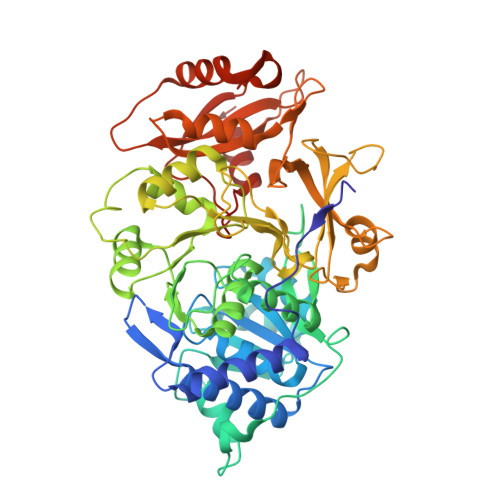Near-infrared dual bioluminescence imaging in mouse models of cancer using infraluciferin.
Stowe, C.L., Burley, T.A., Allan, H., Vinci, M., Kramer-Marek, G., Ciobota, D.M., Parkinson, G.N., Southworth, T.L., Agliardi, G., Hotblack, A., Lythgoe, M.F., Branchini, B.R., Kalber, T.L., Anderson, J.C., Pule, M.A.(2019) Elife 8
- PubMed: 31610848
- DOI: https://doi.org/10.7554/eLife.45801
- Primary Citation of Related Structures:
6HPS - PubMed Abstract:
Bioluminescence imaging (BLI) is ubiquitous in scientific research for the sensitive tracking of biological processes in small animal models. However, due to the attenuation of visible light by tissue, and the limited set of near-infrared bioluminescent enzymes, BLI is largely restricted to monitoring single processes in vivo. Here we show, that by combining stabilised colour mutants of firefly luciferase (FLuc) with the luciferin (LH 2 ) analogue infraluciferin (iLH 2 ), near-infrared dual BLI can be achieved in vivo. The X-ray crystal structure of FLuc with a high-energy intermediate analogue, 5'-O-[N-(dehydroinfraluciferyl)sulfamoyl] adenosine (iDLSA) provides insight into the FLuc-iLH 2 reaction leading to near-infrared light emission. The spectral characterisation and unmixing validation studies reported here established that iLH 2 is superior to LH 2 for the spectral unmixing of bioluminescent signals in vivo; which led to this novel near-infrared dual BLI system being applied to monitor both tumour burden and CAR T cell therapy within a systemically induced mouse tumour model.
Organizational Affiliation:
Cancer Institute, University College London, London, United Kingdom.















